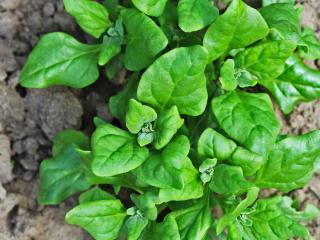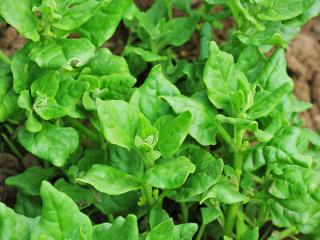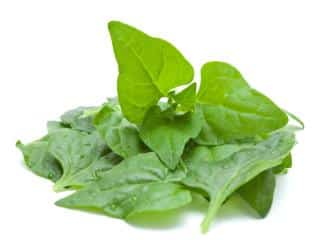

New Zealand spinach is a vegetable that loves full sun.
Key Tetragonia facts:
Latin Names: Tetragonia expansa, Tetragonia tetragonoïdes
Common: tetragonia, New Zealand Spinach
Family: Aizoaceae
Type: Leafy vegetable
Height: about 3.3 feet (environ 1 m)
Planting Distance: 32 inches (80 cm)
Exposure: Sunny
Soil: limestone to neutral, light, rich in humus
Planting: April-May – Harvest: July to October
Spin your garden game up with Tetragonia, a brilliant annual plant. It’s easy to grow, doesn’t care for drought, and is more productive than traditional spinach.
Its taste is nearly identical, and since it comes from New Zealand it’s also dubbed “New Zealand spinach.”
Tetragonia doesn’t ask for much, but it loves well-worked soil. So, during the fall before planting, take time to amend and till the soil. You’ll be happy to know it’s a vegetable that loves growing in full sun, in a warm spot.

For planting New Zealand spinach, you’ve got two options:
Around mid-spring, April-May, soak seeds for 24 hours. Next day, line them up in a row or seed holes. They need their space — plant them apart by at least 32 inches (80 cm).
Another option is to kick things off early spring, in March. After a 24-hour seed soak, sow them into pots or trays. Use a mix of potting soil and sand. Once they show 2 or 3 leaves, select the more vigorous ones transfer them to the growing bed. Tip: wait for any frosts to end first.

So, keep an eye on watering, especially during long-lasting dry spells.
Tetragonia shows great resilience to diseases. Beware of snails and slugs. They just can’t resist those tender young shoots. It’s like candy to them.
Depending on when you sowed your seeds, harvest can start in July, and continue until frost starts nipping at the leaves (around October or November). After picking, these greens can keep in your fridge for a few days.
